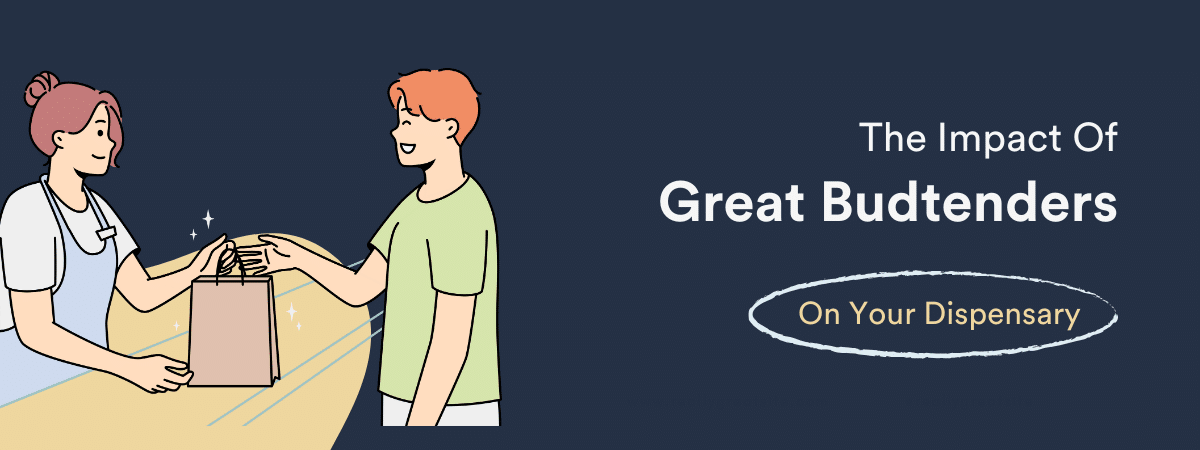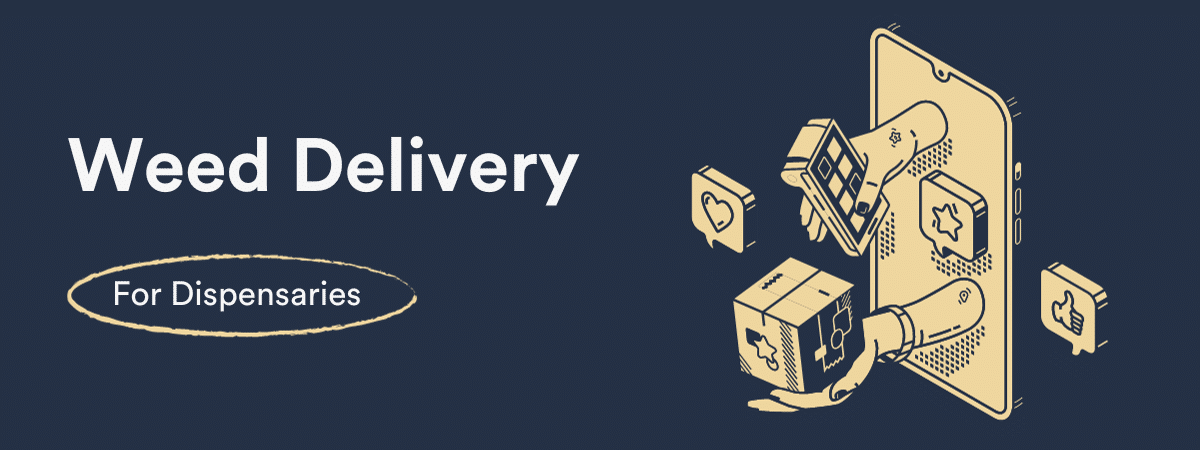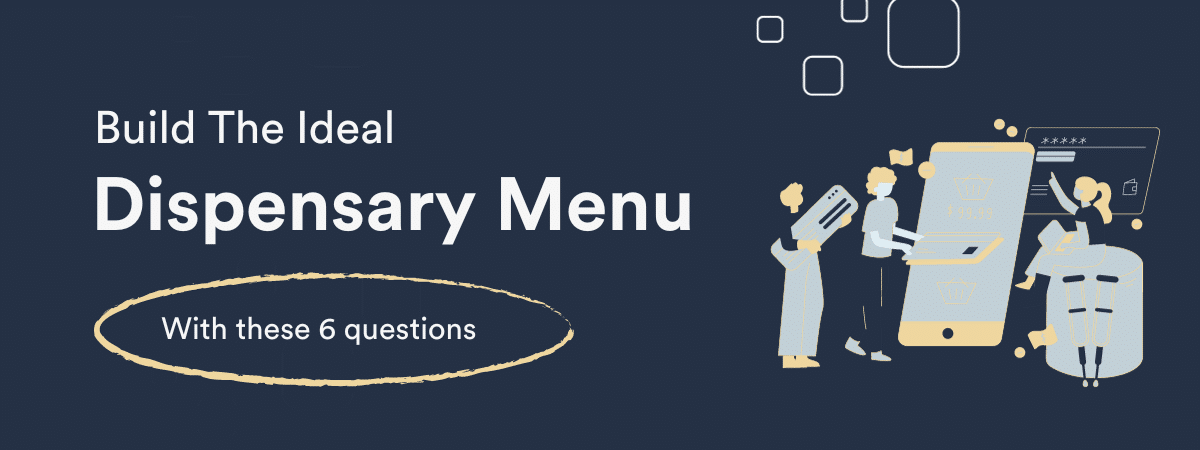Operating a cannabis dispensary is like building a rocket while strapped to it. There’s no owner’s manual, everything happens at light speed, and gravity constantly tries to slow you down. But eventually, every operator asks the big how question:
“How do we sell more weed?”
At deeproots partners, we answer this question daily for our dispensary partners by identifying their SEO/SEM needs and tailoring solutions to increase their visibility. But dispensary marketing is about more than just killer SEO. What else are you doing to market your shop?
While SEO (Search Engine Optimization) can increase visibility and drive traffic to your website and dispensary, the customer’s experience, once they’ve found you, is critical. Dispensaries that consistently outperform their competition also crush it in these key areas:
- Compelling Branding
- Optimized Website
- Menu Functionality
- Search Engine Optimization
- Paid Media Campaigns
- Social Media
- Google Business Profile
- Special Events
- WeedMaps Strategy
- The Brand Experience
- Marketing ROI
I know we said there was no owner’s manual. Well, that was true until we wrote this one. Welcome to The Insider’s Guide to Cannabis Dispensary Marketing. We hope it helps. And if you have any more questions about dispensary marketing, you can hit us up. We’re always here for you.
How To Create a Compelling Dispensary Brand
The competition in licensed cannabis retail is stiff. The market is saturated with other dispensaries, delivery services, and black market operators that undercut everyone. So look around, take it in, and ask yourself:
“Why should someone shop at my dispensary?”
If you can’t answer this why question, you don’t have a brand. Yes, marketing can introduce your dispensary to people, but you won’t sell more weed if you can’t convince those people why your dispensary is the right place to buy it.
That said, branding is complex, and opinions vary about what makes brands work. To keep it simple, we like to think about brands like superheroes. Superheroes do everything an effective brand should:
- Superheroes are instantly recognizable.
- Superheroes are unique.
- Superheroes are needed.
- Superheroes are (usually) loved.
With this in mind, answer “The Superhero Questions,” and potential customers should have a very clear understanding of why to shop at your dispensary:
What’s your origin story?
Everyone loves a great story. Tell yours to connect with your audience.
What’s your ethos?
Your ethos gives people something to support. Cannabis is a culture. Speak to it. Shared values create community.
What are your superpowers?
People can buy weed anywhere. How are you unique? What are you better at?
How are you instantly recognizable?
If your brand (name/logo/colors/style) isn’t instantly recognizable, work on it until it is. Then, keep working on it with your content. Be fresh, original, and consistent.
How do you serve the unique needs of your community?
Cannabis consumers are not all the same. The glitzy aspirational store that kills it in Venice Beach might tank in a blue-collar Michigan suburb. It’s the same with a menu. So give your community what it needs, or someone else will.
Now that you know the why — lock it down with a Brand Style Guide to keep the team on point.
How to Optimize a Dispensary Website
Dispensary websites should be simple and easy to navigate yet content-rich. The branding should match your brick-and-mortar location: colors, fonts, style, and attitude. Any inconsistency here is confusing.
What’s in a Name?
Your dispensary’s name will have a powerful effect on SEO. “Dispensary” and “Dispensary Near Me” are the most searched key terms for cannabis retailers. If you include “Dispensary” and even “Weed Delivery” if applicable in your name (including your DBA — we’ll tell you why later) and store signage, you gain a substantial advantage when users search Google for a dispensary in the area.
Your Website Header (i.e., H1)
This is one of your website’s most essential pieces of real estate. It’s the first thing visitors (and Google) see when they land on your site. It should be written as live text in the top header space of your homepage and communicate information essential to your brand.
Your header should include at least a few of the following:
- Brand name
- Dispensary location
- The brand’s ethos/point of differentiation
- The word “Dispensary” and/or “Delivery”

Clarity is vital. Lack of clarity is fatal. You don’t want a header so poorly drafted that Google mistakes your site for one that sells floral arrangements. Yes, that actually happened. Yikes.
Website Navigation
Navigation should make it seamless and simple for users to do the following:
- Call the store/get directions
- Find hours of operation
- Access/navigate the menu
- Order delivery or pick up
- Find answers to FAQs
- Find specials and deals
- Read reviews
- Link to Social Media
Homepage Content
Whether you’re a single or multi-store dispensary, your homepage should include the following:
- Directory information — the closer to the top of the page your store hours, address and phone number are, the easier you’re making it for your customers and Google to understand you’re a reliable business.
- Branded content — that fleshes out the header and builds your brand’s identity. This is a great place to share your origin story, your ethos, and how you’re unique ( Your answers to the Superhero Questions).
- Product information — product embeds or links to best-sellers are one way to go. The more shoppable, the better.
- FAQs — infuse your homepage with additional content that helps Google pick up on important keywords.
City Pages
City pages are designed to increase your dispensary’s visibility in the areas you serve. To achieve this, neighborhood pages should include geo-relevant content about the service area, such as nearby attractions, activities, businesses, and other points of interest. In addition, neighborhood pages create a personal connection with residents of the service area and increase your visibility for local searches on Google.
Product Pages
Product pages showcase your products, brands, and services. Optimizing these pages with unique descriptions can boost your Google ranking and increase brand visibility when customers search for products within your service area. Product pages should also contain detailed information. This helps inform potential buyers so that they can take action.
For example, a dispensary product page should specify the THC and CBD content, effects, cannabinoids and terpene profiles, and prices. These small but powerful details help consumers make informed decisions, feel comfortable with their purchases, and come back for more.
But beyond that, product pages can also be a great place to utilize SEO best practices. For example, you can include keywords in the product titles, descriptions, and tags. This will make it easier for customers searching for specific products to find what they’re looking for on your site.
Blog
Creating a blog page on your website allows you to share relevant topics, provide helpful resources, and build relationships with potential customers. Moreover, including keyword-rich posts and engaging content can help strengthen your SEO efforts, increase website visibility, and boost overall brand awareness in your service area.
For example, a dispensary blog could include posts about cannabis news, recipes for edibles and topicals, reviews of new products and so on. Encouraging customers to share their experiences is especially beneficial since it helps build up your brand’s credibility and increases website traffic by providing fresh content that can be shared on social media.
No matter what kind of content you decide to feature on your website, one thing is sure: it should all be clear, concise, and optimized for SEO purposes. SEO writing ensures that your content appears in relevant online searches, boosts website visibility, and leads to more conversions.
Likewise, creating a well-rounded website with creative and valuable content will help attract visitors — but only if it’s presented correctly. With carefully crafted headers, branded content, neighborhood pages, product pages, and blog posts (among other tactics), you can create an engaging user experience that boosts your dispensary’s online presence.
So, get out there and start doing what you do best — creating content that reflects your brand, tells a story and helps bring customers to your business.
How to Maximize Cannabis Menu Functionality
We’ve already discussed how the menu relates to the brand. But how your menu functions is just as essential. Menu tech is rapidly evolving. So to choose the best menu tech for your dispensary, it’s critical to understand what you need your menu to do and how different menu solutions address these needs.
Integration
It’s a black eye for your brand when a customer buys a product online and discovers it’s unavailable because your POS didn’t sync with your menu correctly. To ensure that never happens, use a menu solution that syncs to the live inventory in your POS.
And since we’re talking menu integration and POS, it’s also a good idea to make sure your POS syncs live inventory with your in-store menus and 3rd-party marketing platforms such as WeedMaps and Leafly.
SEO Value
As the cannabis consumer becomes more sophisticated, the search volume for cannabis by brand, product, and category is increasing. Therefore, you will improve your SEO performance if your menu helps your website rank for these categories on Google.
E-Commerce
In most industries, e-commerce is an “easy” conversation. There’s Shopify, Woocommerce, Square, and many other options with high-functioning e-comm engines. But that’s not the case for cannabis.
Dispensary Menu Tech
There are various dispensary menu solutions with different capabilities in the core menu functions of integration, SEO, and e-commerce.
Iframe Menus
These are the most popular solutions because they’re so easy to use. Drop a code line on your website, and you’re up and running. They also have done a great job at integrating with all POS platforms in the space. The downside to the iFrame is that Google can’t recognize the menu content, so there’s no SEO value. There are also serious questions about data ownership. It’s wise to forward all provider contracts to your attorney. Your customers are a valuable asset that belongs to you.
SEO Optimized Menus
Companies like Dispense and Tymber offer menu solutions that are a little more complicated to integrate than the iFrame, but Google can read the content. This means your site can rank for product keywords like Blue Dream or brands like 710 Labs. There are also providers like Dutchie, where you can make their menus indexable through some development.
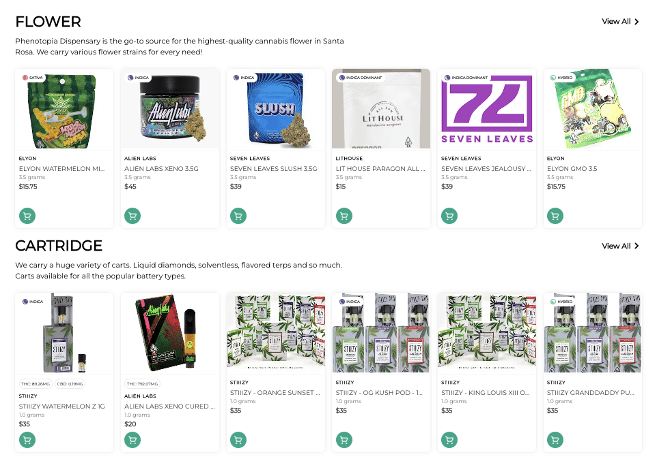
Custom Menus
These can be expensive, but they may offer the best integration, are optimized for SEO, and raise no data ownership issues.
Full-Service Software
With recent consolidations such as Blaze’s acquisition of Tymber, you can move away from aggregated tech solutions to full-service cannabis software built for dispensaries. These solutions integrate menu, e-commerce, and marketing solutions on one platform.
Search Engine Optimization (SEO)
It’s this simple: If potential customers don’t see you in their Google search results, you won’t see them at your dispensary. A strong SEO campaign is essential to improve visibility and sell more weed. To get that done, you will need to hire a digital marketing agency.
How to Choose the Right Cannabis SEO Marketing Agency
Chances are you’ve already heard a few black magic pitches billed at $500 a month with a description of services that’s vague at best and makes no commitment to results. Whatever you do, don’t do that.
A word to the wise before we dig in:
Never contract for SEO services unless the agency is transparent with what they’re doing, why they’re doing it, and commits to a timeline and the results you may expect from your spend.
That’s right. Leave the black magic for Hogwarts.
How Cannabis Dispensary SEO Works
SEO improves your website’s ranking for the most searched keywords for dispensaries, such as:
- Dispensary
- Dispensary Near Me
- Marijuana Dispensary
- Weed
- Cannabis brands and products
- Cannabis categories (Flower, Tinctures, etc.)
In addition to ranking your website in the SERPs or regular search results, every dispensary’s goal should be to rank in what is called the “Local Pack,” or the top three results of the Google Business Profile (GBP). Read more below to learn how to properly manage your GBP to optimize these results and gain more visibility.
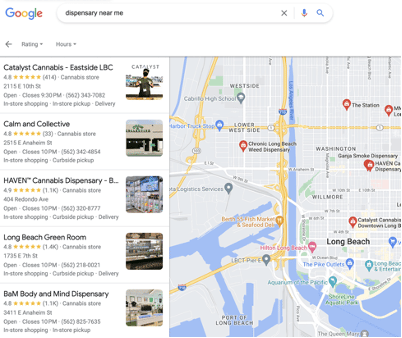
GBP Rankings
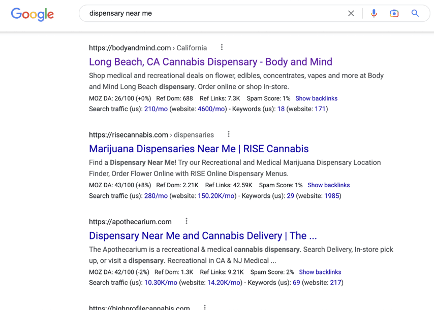
SERP Rankings
The three critical factors that will apply to your Google ranking are:
- Proximity
- Relevance
- Prominence
Proximity involves your physical location in proximity to the search query. Relevance measures your ranking for the most searched keywords. Prominence factors when other authorities in the space cite your brand.
When these factors are balanced and humming, you’ll start to rank for your target keywords. Eventually, your website will be at the top of a potential customer’s search results. When that happens, man, is it fun — like having an extra $100,000k per month in revenue fun.
But don’t take our word for it. This SEO performance case study tells the story. Remember what we said about transparency?
Dispensary SEO Case Study
______
Google Business Profile
The importance of your Google Business Profile (GBP) can’t be overstated. GBP has evolved to become a legitimate social platform. Google’s algorithm also gives it high domain authority, so it’s a critical local ranking factor for SEO. This makes GBP a “‘must-have” for your dispensary if you want to improve your local search results. Beyond SEO, GBP provides several other benefits:
- Zero-click searches
- Convenient source of information
- Brings images and reviews together in one place
- Customer engagement with reviews, photo uploads, edits, and feedback
- Used on Google Maps for directions
How to Setup a GBP Account
This is pretty straightforward, but you’ll need a few things to get started:
- Business Address
- Business Phone Number
- Business Website
Now all you need to do is go to google.com/business and set it up.
How to Manage a GBP Account GBP Account Setup Guide
The best practice is treating your GBP like a social platform, meaning you’ll want to constantly engage with customers, update with new images, and ensure information is as up-to-date as possible. To maximize SEO value, Google wants to see constant activity and good customer service. It’s all about engagement.
Upload Photos Regularly
Adding photos of the store, products, etc., will put your profile on the map…literally!
The Rules of Engagement
Respond to user questions, comments, and reviews quickly and with detail. What’s quick? Within the first hour or two, if possible, but definitely within the first day. Google is looking to ensure your business cares about customer service.
Review Response Guide
For good reviews, a thank you that shows your appreciation is the standard. For bad reviews, an apology and a sincere desire to correct the problem are appropriate. If you believe the review is “fake” or “spam” review based on the name, type of response, and even the amount of 1-star reviews you get in a certain amount of time, we’d suggest getting your whole team to pitch in and flag as inappropriate or report as spam.
Prepare for a Possible Suspension
Because your accounts involve cannabis, Google or your competitors could flag your GBP and possibly suspend its activity. When that happens, it hurts. But don’t panic. It happens to everyone. The best thing you can do is ensure that your GBP’s name matches directly with the name on your DBA and store signage. If you’re in a situation where your account has been suspended, you can reach out to companies like Steady Demand, who help manage and win back your profile.
Paid Media
Paid advertising is tricky because cannabis is still federally illegal. That said, dispensaries that figure out how to do it can gain a substantial advantage over their competitors.
From a digital perspective, cannabis is new, and trust is a major factor. Unfortunately, online conversion rates for paid media are typically low because most people don’t trust enough to click through an ad to a menu and make a purchase.
But the conversion rate improves if the customer already knows who you are. So retargeting ads and a funnel that drives toward SMS and email capture are solid retention strategies.
Social Networks
Most social networks, like Facebook, Instagram, or Snapchat, don’t allow cannabis ads. This ban is strictly enforced on these social networks.
Google Ads
Google Ads policy also bans ads for recreational drugs, but there’s a way to place ads that potential customers see when they search for something like “Weed Store Los Angeles.” There’s also a way to place ads that customers see when they search for a competitor.
There’s more than a little secret sauce to this. Some of it involves how the ads are written. For example, you can’t explicitly mention cannabis or dispensary. Success depends on your ability to use ambiguous language to communicate what you do without the prohibited words that raise red flags.
Your landing page is also key. It must be clean, and it’s best to set it up within your domain. However, you may need to use an alternate domain and scrub any mention of cannabis. That landing page then forwards to your menu.
Youtube Ads
Did you know that Youtube is actually the world’s largest search engine? That’s a huge reason Google now owns it. Like Google, ads for recreational drugs are banned, but there’s still a way to run cannabis ads that pop up before videos.
Another advantage of Youtube is that it has vast targeting capabilities:
- You can target by interest
- You can target by the type of videos people watch
- You can target people who have visited certain websites
These capabilities make Youtube Ads a fantastic tool for expanding brand awareness.
Banner Ads
Buying banner ads is another form of paid media. Programmatic is a system that automates buying and selling of banner ads.
Banner ads are a somewhat dated format. While there are ways to spruce them up with new creative like Social Display (Spaceback), they are stronger as a brand awareness and retention play because they put your content in front of eyes that have already seen your site or visited your store.
Outdoor
Outdoor is the most traditional class of paid media. The billboard industry was the first to welcome cannabis with open arms. Today, you can’t go a block in a state with legal weed and not see a cannabis billboard.
Billboards tend to be expensive, but billboards in the right location with the right budget perform well. There are also companies like Swing Media that sell remnant inventory cheaper than premium.
Beyond Billboards, Outdoor can include everything from Gas Station TVs to Mobile LED Trucks. If you’re really bullish on Outdoor but don’t want to manage multiple vendors, there are platforms like Onscreen.ai that can help.
Weedmaps (and Leafly)
Weedmaps and Leafly are search engines that provide a directory of dispensary locations (including updated menus and reviews), brands, and delivery services. Consumers can also place online orders for products from dispensaries or delivery services via their sites.
Weedmaps and Leafly can be effective marketing tools, but understand that WeedMaps and Leafly compete with you for your customers.
The Benefit of Marketing With Weedmaps
While Google is gaining traction, Weedmaps remains the default search engine/app for many cannabis users. It’s one of the few marketing platforms that provide guaranteed, immediate ROI. They’ve already done the heavy lifting of marketing and SEO. Just cut the check, and you’ll sell more weed. It’s an allure that’s almost impossible to resist.
The Problem of Marketing With Weedmaps
Weedmaps spends a fortune on SEO to be the first search result when a potential customer looks for cannabis in your area. When you pay for their service, they use your money to attract your potential customer to their funnel. Moreover, every dollar spent on Weedmaps is a dollar you don’t spend on your own SEO and Paid Media to attract customers to your funnel.
This is not a long-term winning strategy. You want your customers visiting your website, not Weedmaps. The best way to do this is with effective SEO and Paid Media that puts you ahead of Weedmaps in local search results.
Effective Weedmaps Strategy
Be strategic. If you’re a new dispensary, you may want to launch with a heavy Weedmaps spend for immediate visibility and back off as your SEO reach pulls traffic to your site organically. “Chumming” is another strategy that involves periodically pumping up your Weedmaps spend to drive sales and then backing it down when you see diminishing returns.
Social Media
Social media is one of the only places beyond your website where you can communicate directly with your audience and publish content that defines your brand. But it’s also the most challenging place.
Cannabis Content
Social media is full of cannabis content, but cannabis content is technically banned. Enforcement of the content ban is also uneven. While some operators achieve verification, others get suspended or shut down for violations of the content ban. When that happens, it hurts. All that time, all that effort, all that audience, all that engagement is gone. Poof.
For this reason, it’s wise to maintain a backup page and focus on other forms of marketing.
Lifestyle Content
One workaround to social media’s cannabis content ban is lifestyle content. Choose concepts that expand on your brand or appeal to your community.
Special Events
Special Events are a great way to build community, expand brand awareness, and drive growth. The right event can expose your dispensary to a new audience. Some examples of Special Events include:
- Holiday Toy Drives
- Charity events
- Pet Adoptions
- 420 or 710 celebrations
- Holiday celebrations
- New brand/product drops
- Live music
- Comedy shows
These events should be supported by key brands on your menu. It helps them drive sales/awareness for their brand, and their support may improve sales and awareness for your brand. Always leverage your brand relationships to help your marketing efforts.
The Brand Experience
This is the big one. You can throw all the money in the world at dispensary marketing, but it won’t matter if people don’t enjoy shopping at your dispensary.
We could go on and on here, but this is not an operations manual. The bottom line is that you should strive to create a memorable shopping experience that makes people want to come back. According to Jeff Bezos, “your brand is what other people say about you when you’re not in the room.”
What will your customers say about you?
Return on Investment (ROI)
Dispensary marketing is complex. There are multiple platforms, and most are siloed. This makes it challenging to execute and is not enough to simply execute. You should also track ROI on all marketing platforms so you know what works, what doesn’t, and what needs adjustment.
Tracking ROI with Your POS
Most POS systems include the marketing source as part of their report. For this to be accurate, you must train staff to ask this question properly and to enter the source correctly so that the data is accurate.
Tracking ROI with Google Analytics
Once you have that fancy e-commerce menu, you can start tracking revenue from online orders through Google Analytics. You can also track other metrics that lead to revenue, like email/SMS sign-ups, direction requests and phone calls. To do this, you will need to ensure your Google Analytics 4 account is set up correctly.
And if you have more resources or work with us, you can utilize a robust dashboard to track all your metrics.
Tracking ROI on Other Platforms
Other marketing platforms may track ROI but are generally limited to the service they provide. WeedMaps offers basic reports. Messaging and data platforms such as Happy Cabbage and Alpine IQ have similar capabilities, as does Paid Media/SEM.
The bottom line is that you should know where your marketing dollar goes and what that spend returns. Otherwise, you have no idea what’s working. You’re just whistling in the dark.
____
We hope this guide has shed some light on the murky waters of dispensary marketing. We know it can be a big undertaking, which is why we built a niche set of services to help make your job of selling more weed easier.
If you’d like to learn more about how we help, book a call with us. We’re to listen and see how we can help.

